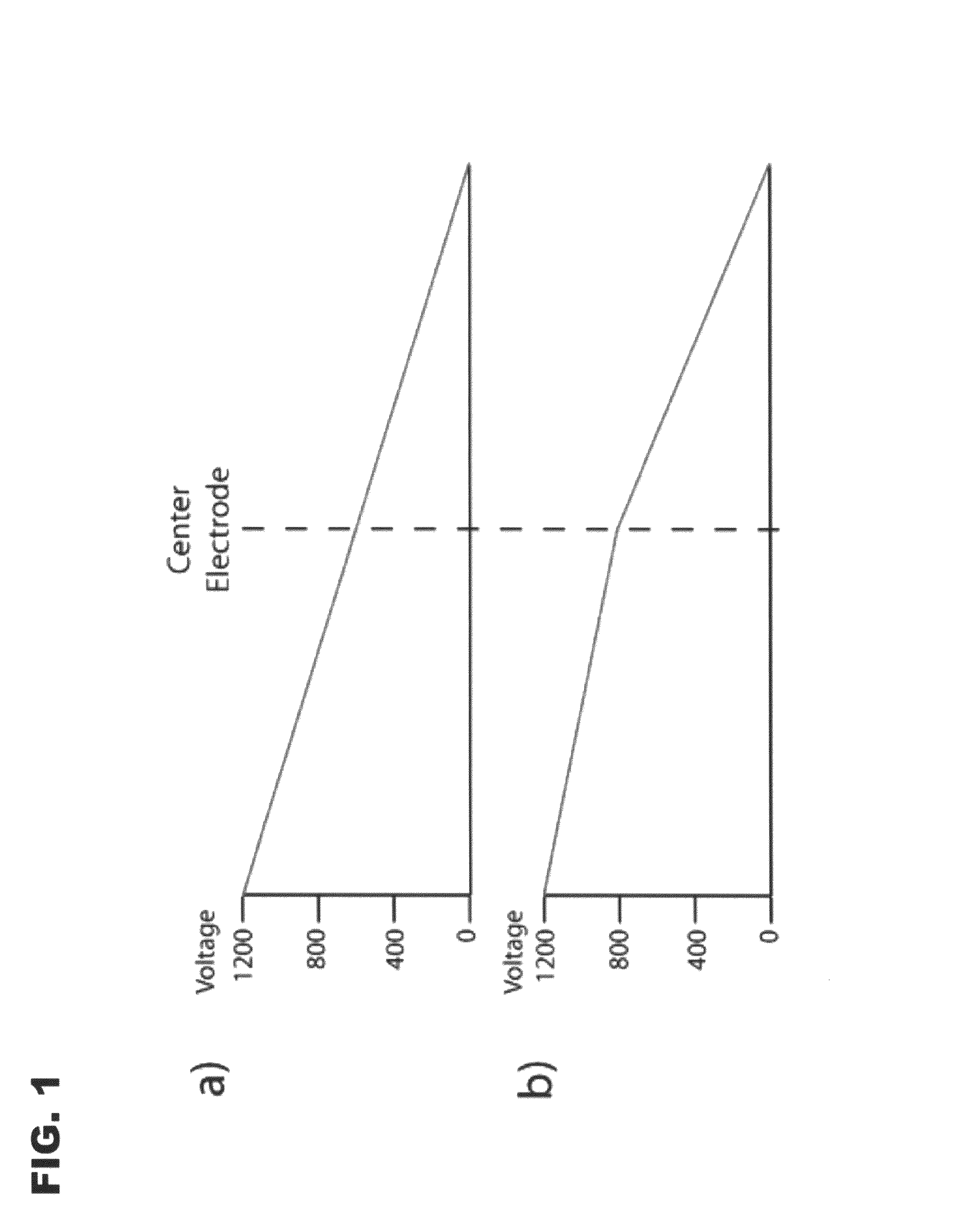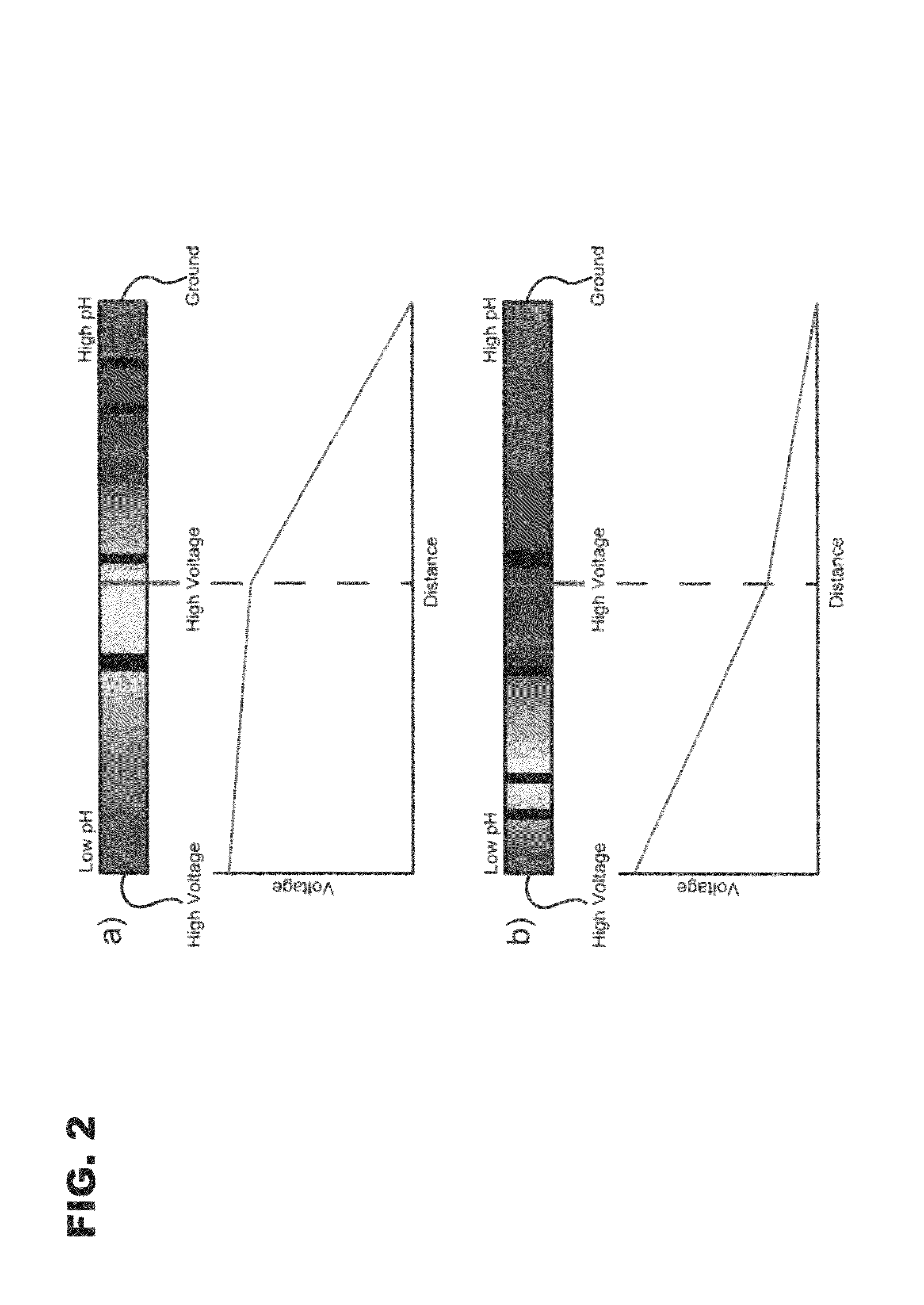Method of detecting analyte-biomolecule interactions
a biomolecule and analyte technology, applied in the direction of fluid pressure measurement, liquid/fluent solid measurement, peptide measurement, etc., can solve the problem of no reliable techniques for identifying biomolecules or biomolecules in cells
- Summary
- Abstract
- Description
- Claims
- Application Information
AI Technical Summary
Benefits of technology
Problems solved by technology
Method used
Image
Examples
examples
[0055]The following examples illustrate various embodiments of the invention.
examples 1-5
Characterization of Dynamic Isoelectric Focusing Theory
[0056]Dynamic isoelectric focusing (dynamic IEF) is similar to capillary isoelectric focusing (cIEF) in that it focuses proteins on the basis of their isoelectric point by establishing a pH gradient using ampholytes and an electric field. Although the pH gradient and the electric field in cIEF are constant, giving each focused protein in the sample a fixed position, dynamic IEF moves the pH gradient through manipulation of the electric field. This enables control over each protein's position and focused width. By changing the electric fields during a separation, focused proteins can be brought to a fixed sample point for collection and further analysis by chromatography or mass spectrometry, for instance. The dynamic control of each protein's position overcomes the major disadvantage of cIEF, which is the difficulty in interfacing to other techniques, while providing all of the advantages of cIEF.
[0057]Dynamic IEF establishes a ...
example 1
Proof-of-Concept with PTFE Tubing
[0073]Proof-of-concept tests were performed using PTFE tubing with an i.d., of 0.02 (˜528 μm) in a three-electrode configuration. The tubes were filled with universal indicator and a 3% ampholyte solution. Photographs of this setup are seen in FIG. 4. The relatively large tubing has several disadvantages, such as excess heating, siphoning, and eddy currents, but the size made it possible to easily see the pH gradients as they formed and were then moved. The anode contained 0.2 M acetic acid; the cathode, 0.5% ammonium hydroxide; and the center vial, 3% ampholyte. FIG. 4a shows the initial focusing conditions with voltages of 2200, 2195, and 0 V. As expected, the pH gradient forms between the center electrode and ground, and the high voltage section is completely acidic. The center voltage was then dropped to 1100 V, and the gradient was moved so that a neutral pH was present in the center, as shown in FIG. 4b. The refocusing took ˜10 min. Although th...
PUM
| Property | Measurement | Unit |
|---|---|---|
| voltage | aaaaa | aaaaa |
| voltage | aaaaa | aaaaa |
| voltage | aaaaa | aaaaa |
Abstract
Description
Claims
Application Information
 Login to View More
Login to View More - R&D
- Intellectual Property
- Life Sciences
- Materials
- Tech Scout
- Unparalleled Data Quality
- Higher Quality Content
- 60% Fewer Hallucinations
Browse by: Latest US Patents, China's latest patents, Technical Efficacy Thesaurus, Application Domain, Technology Topic, Popular Technical Reports.
© 2025 PatSnap. All rights reserved.Legal|Privacy policy|Modern Slavery Act Transparency Statement|Sitemap|About US| Contact US: help@patsnap.com



